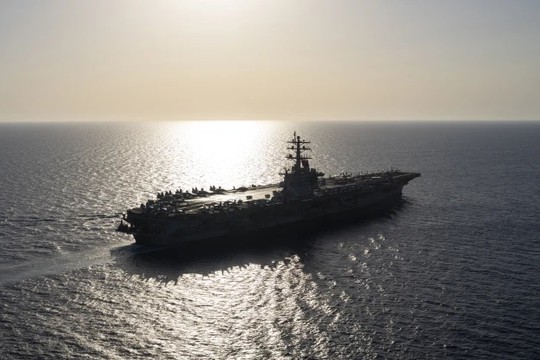Photo: AP
The U.S. Navy prepared for decades to potentially fight the Soviet Union, then later Russia and China, on the world’s waterways. But instead of a global power, the Navy finds itself locked in combat with a shadowy, Iran-backed rebel group based in Yemen, writes AP NEWS.
The U.S.-led campaign against the Houthi rebels, overshadowed by the Israel-Hamas war in the Gaza Strip, has turned into the most intense running sea battle the Navy has faced since World War II, its leaders and experts told The Associated Press.
The combat pits the Navy’s mission to keep international waterways open against a group whose former arsenal of assault rifles and pickup trucks has grown into a seemingly inexhaustible supply of drones, missiles and other weaponry. Near-daily attacks by the Houthis since November have seen more than 50 vessels clearly targeted, while shipping volume has dropped in the vital Red Sea corridor that leads to the Suez Canal and into the Mediterranean.
The Houthis say the attacks are aimed at stopping the war in Gaza and supporting the Palestinians, though it comes as they try to strengthen their position in Yemen. All signs suggest the warfare will intensify — putting U.S. sailors, their allies and commercial vessels at more risk.
“I don’t think people really understand just kind of how deadly serious it is what we’re doing and how under threat the ships continue to be,” Cmdr. Eric Blomberg with the USS Laboon told the AP on a visit to his warship on the Red Sea.
The pace of the fire can be seen on the Arleigh Burke-class destroyer, where the paint around the hatches of its missile pods has been burned away from repeated launches. Its sailors sometimes have seconds to confirm a launch by the Houthis, confer with other ships and open fire on an incoming missile barrage that can move near or beyond the speed of sound.
“It is every single day, every single watch, and some of our ships have been out here for seven-plus months doing that,” said Capt. David Wroe, the commodore overseeing the guided missile destroyers.
One round of fire on Jan. 9 saw the Laboon, other vessels and F/A-18s from the aircraft carrier USS Dwight D. Eisenhower shoot down 18 drones, two anti-ship cruise missiles and a ballistic missile launched by the Houthis.
Nearly every day — aside from a slowdown during the holy Muslim fasting month of Ramadan — the Houthis launch missiles, drones or some other type of attack in the Red Sea, the Gulf of Aden and the narrow Bab el-Mandeb Strait that connects the waterways and separates Africa from the Arabian Peninsula.
“This is the most sustained combat that the U.S. Navy has seen since World War II — easily, no question,” said Bryan Clark, a former Navy submariner and a senior fellow at the Hudson Institute. “We’re sort of on the verge of the Houthis being able to mount the kinds of attacks that the U.S. can’t stop every time, and then we will start to see substantial damage… If you let it fester, the Houthis are going to get to be a much more capable, competent, experienced force.”
While the Eisenhower appears to largely stay at a distance, destroyers like the Laboon spend six out of seven days near or off Yemen — the “weapons engagement zone,” in Navy speak.
Sea combat in the Mideast remains risky, something the Navy knows well.
The Eisenhower’s air crews have dropped over 350 bombs and fired 50 missiles at targets in the campaign, said Capt. Marvin Scott, who oversees all the air group’s aircraft. Meanwhile, the Houthis apparently have shot down multiple MQ-9 Reaper drones with surface-to-air missile systems.
“The Houthis also have surface-to-air capabilities that we have significantly degraded, but they are still present and still there,” Scott said. “We’re always prepared to be shot at by the Houthis.”
…There are two phrases in the text to demonstrate the Americans’ genuine fear face-to-face to a stubborn enemy:
- “…putting U.S. sailors, their allies and commercial vessels at more risk,”
- “…sea combat in the Mideast remains risky.”
Too risky to be an American sailor?
US Army accustomed to kill, but not accustomed to die. Now they are very scared. Long before their missions were absolutely safe for the US Navy, but that's in the past.
read more in our Telegram-channel https://t.me/The_International_Affairs

 10:12 18.06.2024 •
10:12 18.06.2024 •























